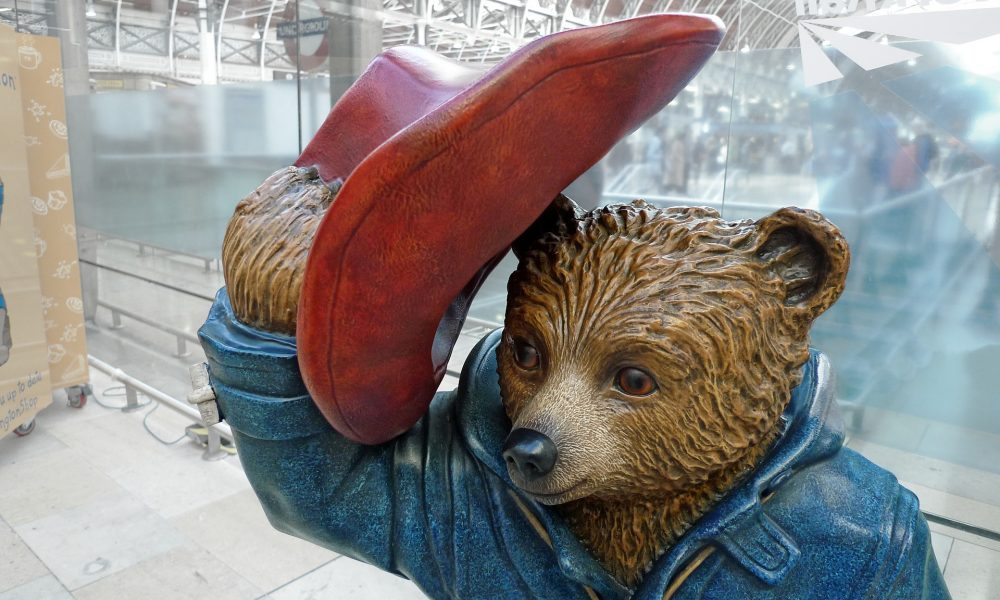Michael Bond grew up on stories. As a young boy, he could not go to bed until his parents read him one. Stories were as pivotal to Bond as the furniture in his home, fostering a love for writing and literature that inspired him to create his own narratives. One of these fictions, A Bear Called Paddington, published on October 13, 1958, would capture the hearts of children across the globe for decades to come.
Less well known is Bond’s inspiration for the heartfelt children’s book: the children of the Kindertransport. Bond served in both the Royal Air Force and the Middlesex Regiment of the British Army, and he frequented British train stations. He was particularly touched to see the children arriving in Reading Station, a transport center in Berkshire, after long journeys from Germany, Austria, Czechoslovakia or Poland in 1939.
After Germans destroyed Jewish synagogues, homes, schools and businesses during Kristallnacht, many Jews wanted to flee Nazi influence. Almost 100 Jews died during this night, and Germany only compounded these losses by confiscating all insurance payouts to Jews who had experienced property damage. Despite the imminent danger in Germany and beyond, visas were hard to come by, as few countries opened their borders to the Jews. But on November 21, 1938, the British Parliament allowed Jewish children under the age of 17 to enter the United Kingdom because of the antisemitism growing throughout Germany and Austria.
In December 1938, Florence Nankivell led the first Kindertransport. Guiding 196 Jewish children to the United Kingdom, Nankivell braved intimidation by German policemen and prioritized the safety of the children, who came from an orphanage the Nazis destroyed during Kristallnacht. After Nankivell’s first trip, almost 10,000 more children would find refuge in England. Over the next nine months, individuals of all faiths would collaborate as part of the Kindertransport to save Jewish children from the grasp of the Nazis.
Bond saw these children, many of whom would never see their families again, walk through Reading Station. “They all had a label round their neck with their name and address on and a little case or package containing all their treasured possessions,” Bond said in an interview with The Telegraph before his death in 2017. “So Paddington, in a sense, was a refugee, and I do think that there’s no sadder sight than refugees.”
Although Bond did not create Paddington Bear until two decades after he was confronted by the image of the Kindertransport children, they remained in his mind. One morning in 1958, he was searching for writing inspiration and simply wrote the words: “Mr and Mrs Brown first met Paddington on a railway platform…”
“When I wrote those few words, I had no idea quite what a change they would eventually make to my life,” Bond recounted, as recorded on his website. “It was really a case of putting something down on paper in order to get my brain working that morning.”
The images of the children arriving in the train station soon inspired the words that would bring Paddington Bear’s world to life. Known for his royal blue overcoat, striking red hat and tag that says “Please look after this bear. Thank you,” Paddington embodies the appearance of many Kindertransport children. His suitcase is an emblem of his refugee status.
Paddington Bear, however, hails from Peru. Bond originally wanted the bear to come from Africa, but his agent was opposed, claiming there were no bears in Africa. Paddington Bear was welcomed into the home of a British family—the Browns—after a precarious journey as a stowaway. British hospitality saved Paddington Bear, just like it saved the Jewish children on the Kindertransport.
This hospitality is on display in Mrs. Brown’s kind words and deeds during her first meeting with Paddington in the train station. After she and her husband approach Paddington, asking him if he needs help, Mrs. Brown says, “‘Oh, Henry, what shall we do? We can’t just leave him here. There’s no knowing what might happen to him. London’s such a big place when you’ve nowhere to go. Can’t he come and stay with us for a few days?’”
The journey, the children’s competing fear and courage and the kindness of the British inspired more than just Bond. The children, now old enough to be grandparents, are today honoring their rescue by pushing for Britain to accept refugees of the current era. In 2018, they asked Britain to take in 10,000 adolescent refugees from around the globe. The United Kingdom has admitted thousands of refugees since this petition, however, that policy or trend is slowing because of growing conservatism and the spread of COVID-19. In 2020, the United Kingdom allowed in only 900 unaccompanied asylum-seeking children.
Since 1958, Bond has released 28 Paddington Bear books, which have inspired two movies. A third Paddington movie will be released in 2023. The kindness of the Browns and their ability to welcome a bear who just wanted to be loved continues to give hope to young refugees searching for a home more than 60 years after Bond created Paddington Bear.


A heart warming story.